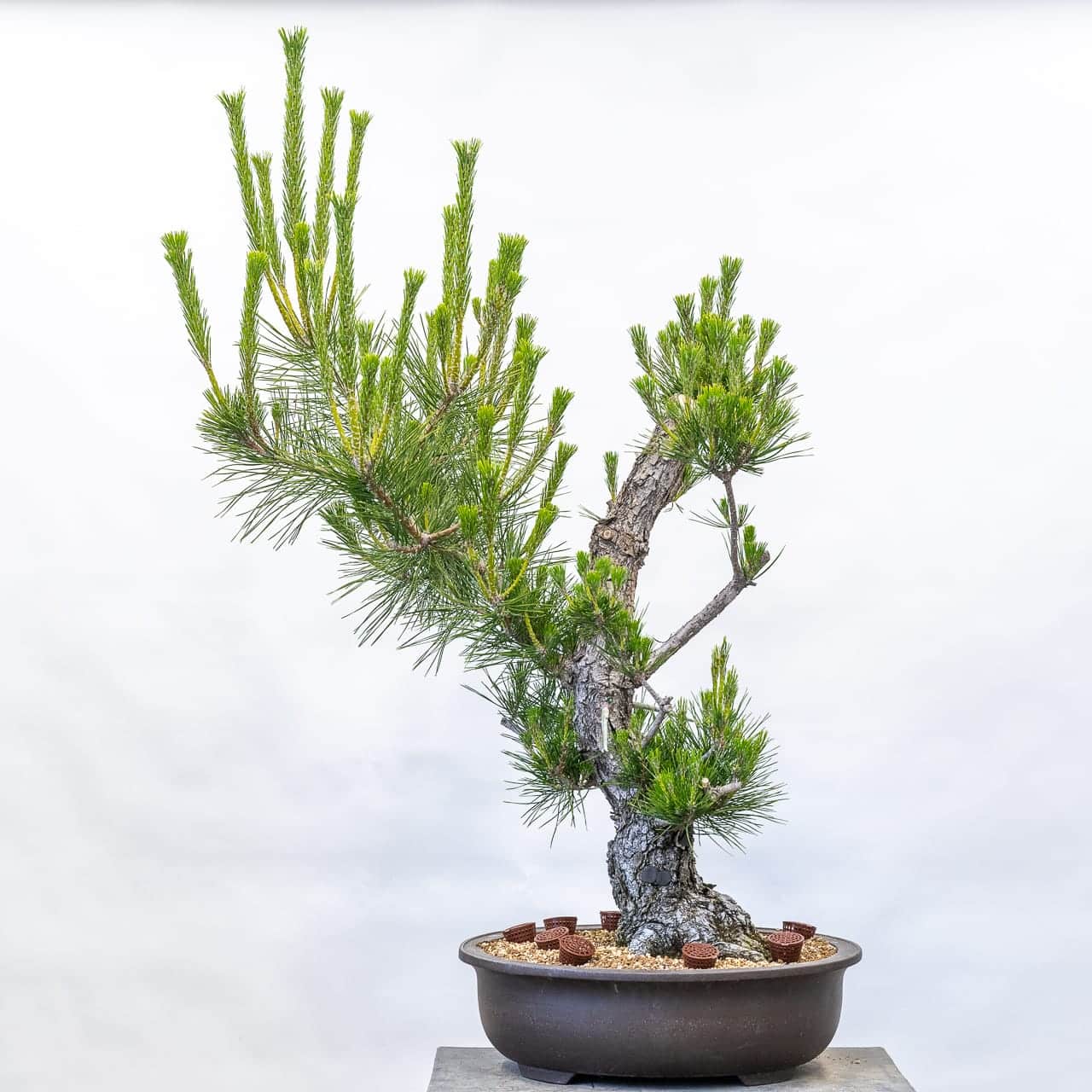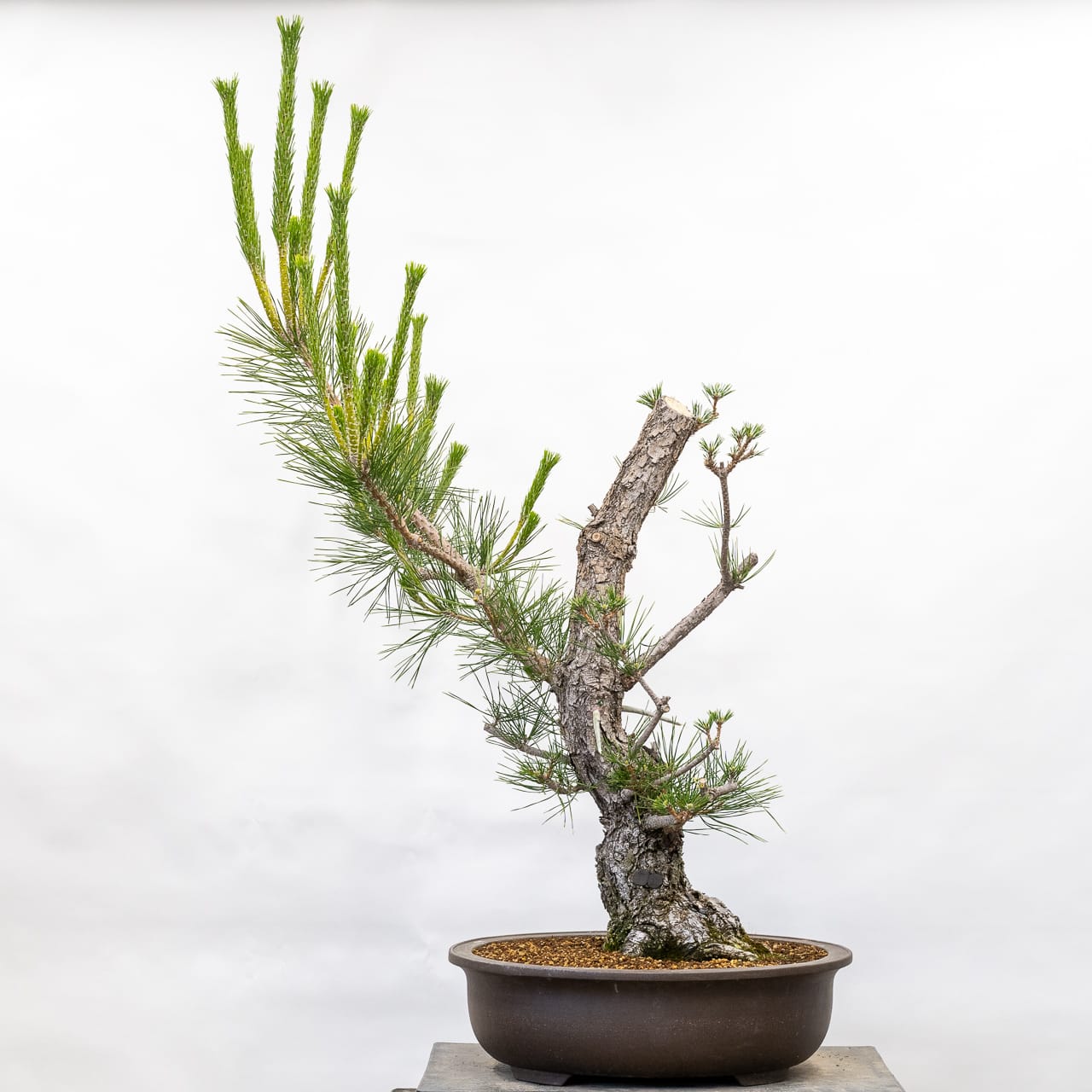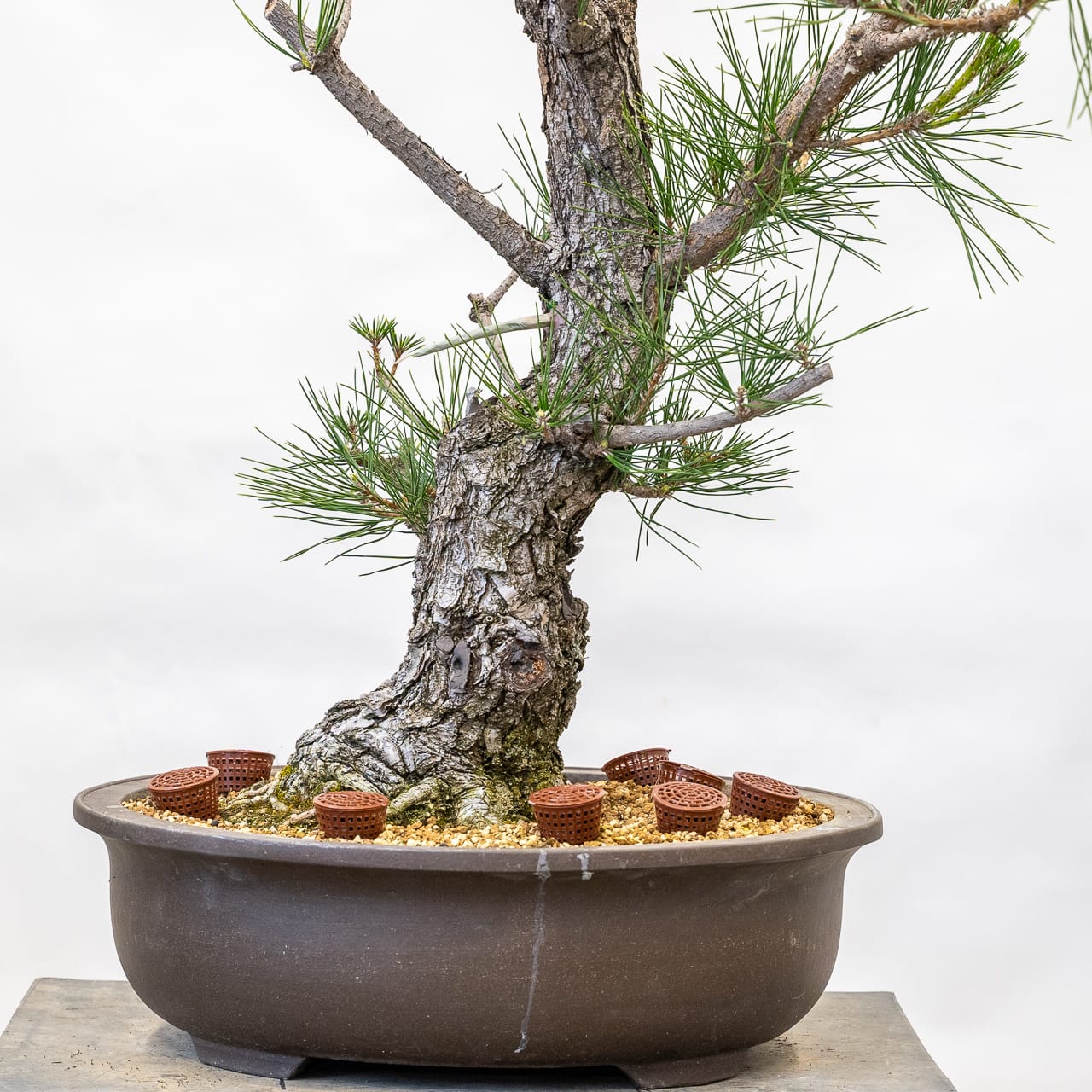A common approach to developing bonsai from scratch is to focus on trunk development first and branch refinement second.
When we focus on developing the trunk, we generally encourage rapid growth until the trunk reaches the desired size. Much slower growth is useful when focusing on branch ramification.
Between these two stages of development is a transition period where the goal is to slow the rate of growth. We can slow growth by using smaller containers, reducing fertilizer, and pruning the branches that were used to thicken the trunk.
The pine below is right in the middle of this transition period. I’m letting new growth on the future apex grow freely so the top of the trunk continues to thicken while decandling the lower branches to improve ramification. Here’s the tree before and after this work.

Field-grown Japanese black pine

After pruning, decandling, and thinning needles – 49″ tall
I removed about half of the branches growing along the new apex and decandled all of the lower branches to encourage ramification. The reason for reducing the branches along the apex is to increase the odds that the tree produces summer growth on the lower branches. If too many branches near the apex grow freely, the tree may not produce summer shoots on the lower branches.
Once the apex is bigger, I’ll reduce the top of the trunk and focus exclusively on the branches. You can get an idea about the future size of the tree from the photo below.

The future size of the tree will be closer to 18″ tall
We’ll take a look at a tree just out of this transition phase on Friday.
Sei Boku Bonsai Kai Exhibit This Weekend!
On June first and second, Sei Boku Bonsai Kai will host their 36th annual exhibit at the San Mateo Garden Center. Show hours are 10:00 a.m. – 4:00 p.m. both days.
Admission is free and includes entry to the club member plant sale and vendors. Saturday features demonstrations by Steve Iwaki and Jerry Carpenter from 1:00 p.m. – 3:00 p.m. Dr. Bonsai will be available to offer styling and care tips. I’ll be vending at the event with tools, supplies and a selection of satsuki azalea bonsai.
Check the Sei Boku Bonsai Kai website for more information.
Subscribe to Bonsai Tonight
New Posts Delivered Every Tuesday and Friday
Chris says
Mr Dupuich,
I would have guessed that everything of the “old trunk” above the new apex line will be eventually removed. Why decandling these and not just consider removing it? What are you thinking to do with the old trunk line that I am unable to visualize?
Jonas Dupuich says
Good question Chris – I’m keeping the branches at the top of the tree to preserve sap flow in hopes of grafting branches below. If I remove the top of the tree now, I won’t be able to make grafts where I’d like new branches in the future. Once I have the branches I need then the top will come off. Thanks!
J.W. says
Will the Japanese black pine bud back on old wood? I have a 30 year old tree with some long branches which I would like to shorten, or at least get some back growth on. My understanding is that black pines is a rare pine that may back bud (which is kind of what I saw on your apex had a lot of budding, which got me wondering about it).
Jonas Dupuich says
Hi J.W.! Although black pines can bud on old wood, it’s hard to count on it. If the tree is relatively young and growing vigorously (the present tree is an example of this), back budding is more likely than on older branches or trunks. Back buds are also more likely in places that get a lot of sunlight as opposed to interior branches. If you have long branches that you would like to shorten, grafting is likely the best bet.